Day 1 of a 3-day Summer Tour. What a difference a day makes! Today was bright and sunny, and much warmer, up to 20C already by 9am and a maximum of 22C in the afternoon, despite a freshening east wind. We spent the day down in the Broads and then went out again in the evening to look for Nightjars.
Our destination for the morning was Hickling. As we arrived in the car park, a Willow Warbler was singing. One of the wardens was just setting up for a children’s moth morning in the car park and kindly gave us a couple of his surplus moths to look at – the Reed Leopard was much rarer, found only in the UK in the Norfolk Broads and a couple of other restricted sites, but the Poplar Hawkmoth proved more popular!
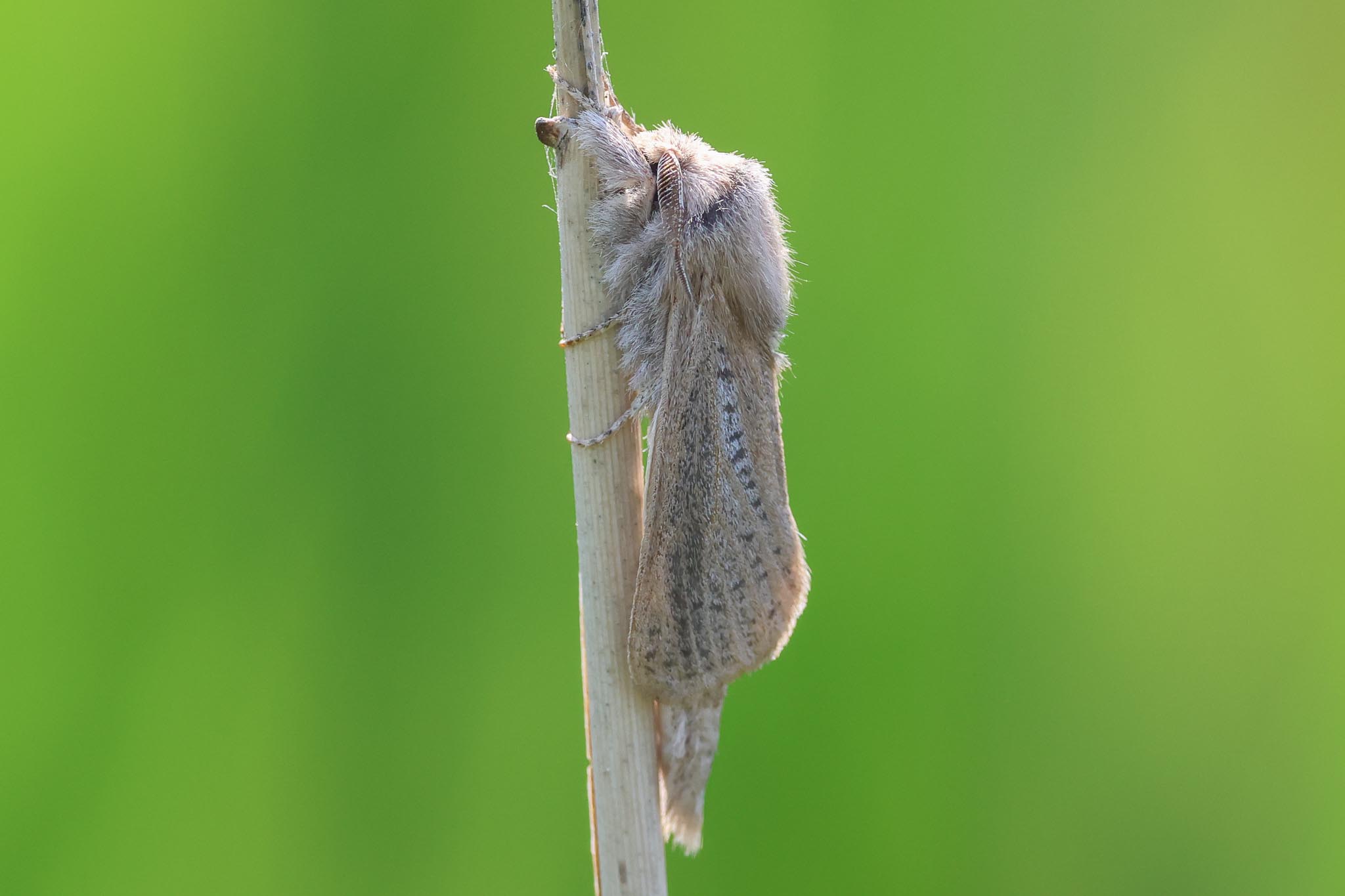
We went to try and check in at the Visitor Centre as the door was open, but we were told they were actually still closed and the door was promptly shut. We thought we would go out for a walk first and check in later. Then we were just walking past when someone came running out chasing us for permits, despite the fact that the Centre was not actually due to open until 10am. It was then very slow to process everyone through and we should probably have gone out and focused on birding first.
We eventually got away, and walked down towards the Stubb Mill track. A Swallowtail butterly flew over the path ahead of us but disappeared straight over the hedge the other side. Still, a good omen to see one on the wing already.
At the first pool, we could see a Spoonbill feeding at the back, but it quickly disappeared into the vegetation. We could hear Common Cranes bugling, but couldn’t see well from here due to the bushes lining the track, although we eventually managed to see one flying round and dropping into the reeds through a gap.
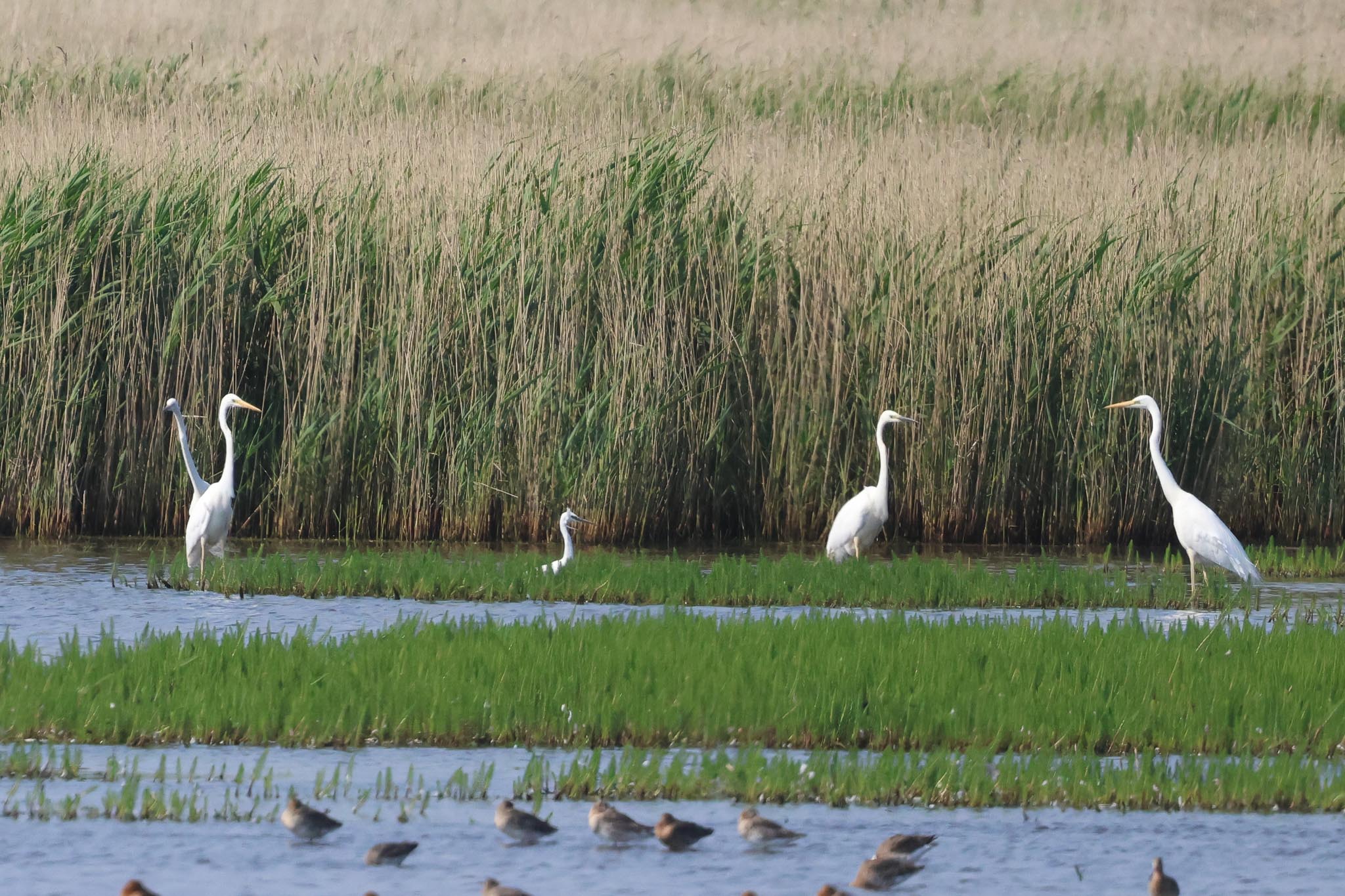
There were four Great White Egrets together on the back of the next compartment. We had a better view of them when we got to the first platform and could look over the bank, feeding together with a couple of Little Egrets and a Grey Heron for size comparison. There were a few waders on here too – a single Greenshank with some Redshank, a Common Snipe, lots of Black-tailed Godwits, a couple of Avocets and a few Lapwings, but there was no sign of the Black-winged Stilt which had been here earlier. There was a nice selection of ducks to – another Wigeon, a couple of Teal, plus several Shoveler and lots of Gadwall.
As we continued on along the track, there were several dragonflies flying now in the sunshine – Four-spotted Chasers and our first Norfolk Hawkers of the year (in Norfolk at least!). Damselflies included nice views of Variable Damselfly.
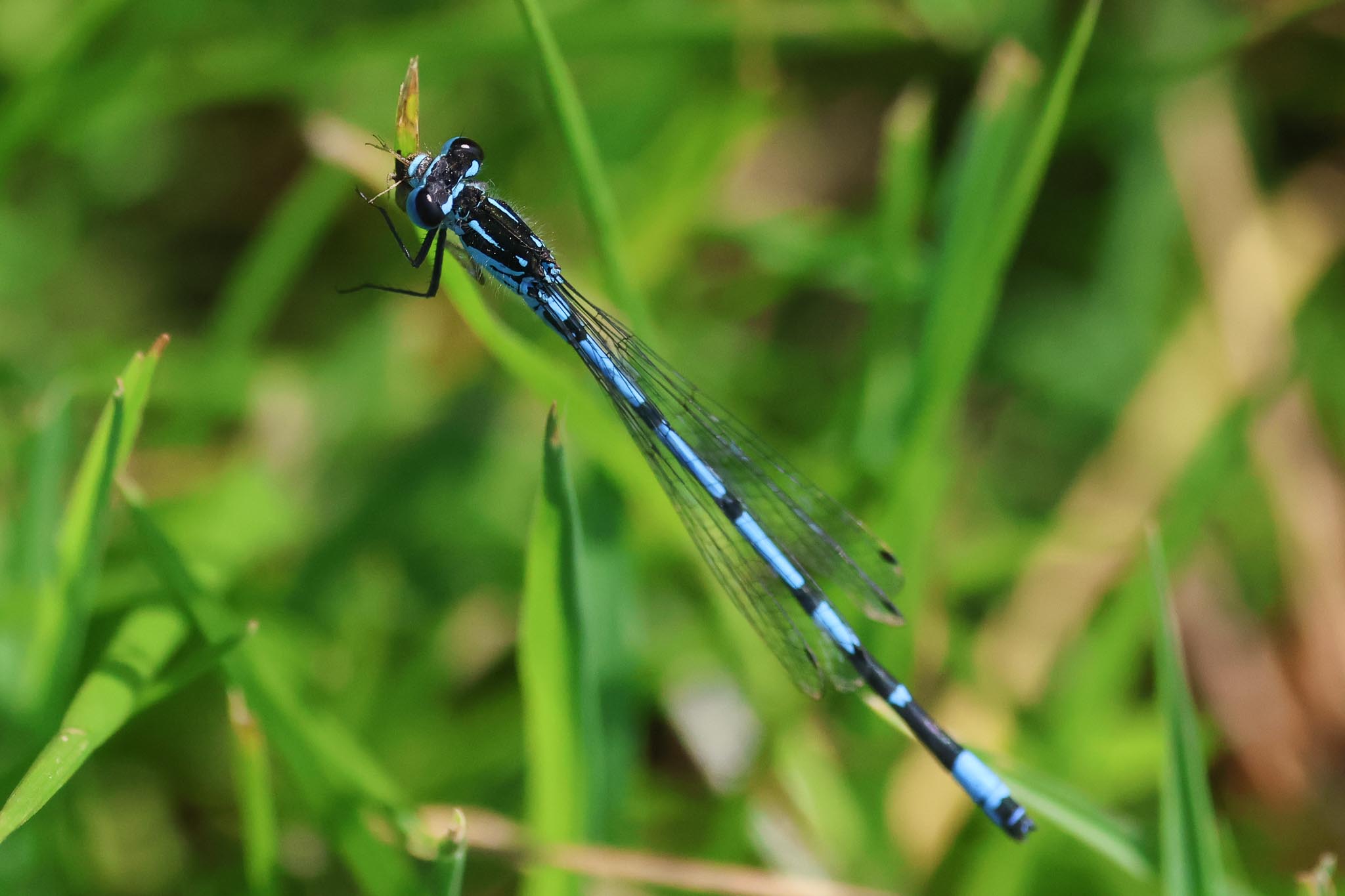
When we got down to the corner, we discovered that the Black-winged Stilt had just flown off. We had only missed it by a few minutes, so we would probably have seen it if it hadn’t taken so long in the Visitor Centre! There were several Tundra Ringed Plover on the scrape still and we had nice views of a Little Ringed Plover in the scope. We could see several Spoonbills in the trees beyond. A Hobby circled high over the middle of the reeds, catching insects on the wing, but drifted off away from us. Two more Cranes flew in from beyond the dead trees, but dropped down out of view.
There was no sign of the Stilt returning, so we set off back along the track. We hadn’t gone far before two more Cranes circled up over the reeds. They were trying to find a thermal so we had much better views now, as they gained height, before eventually heading off to the north, over the track ahead of us and away over the wood beyond.
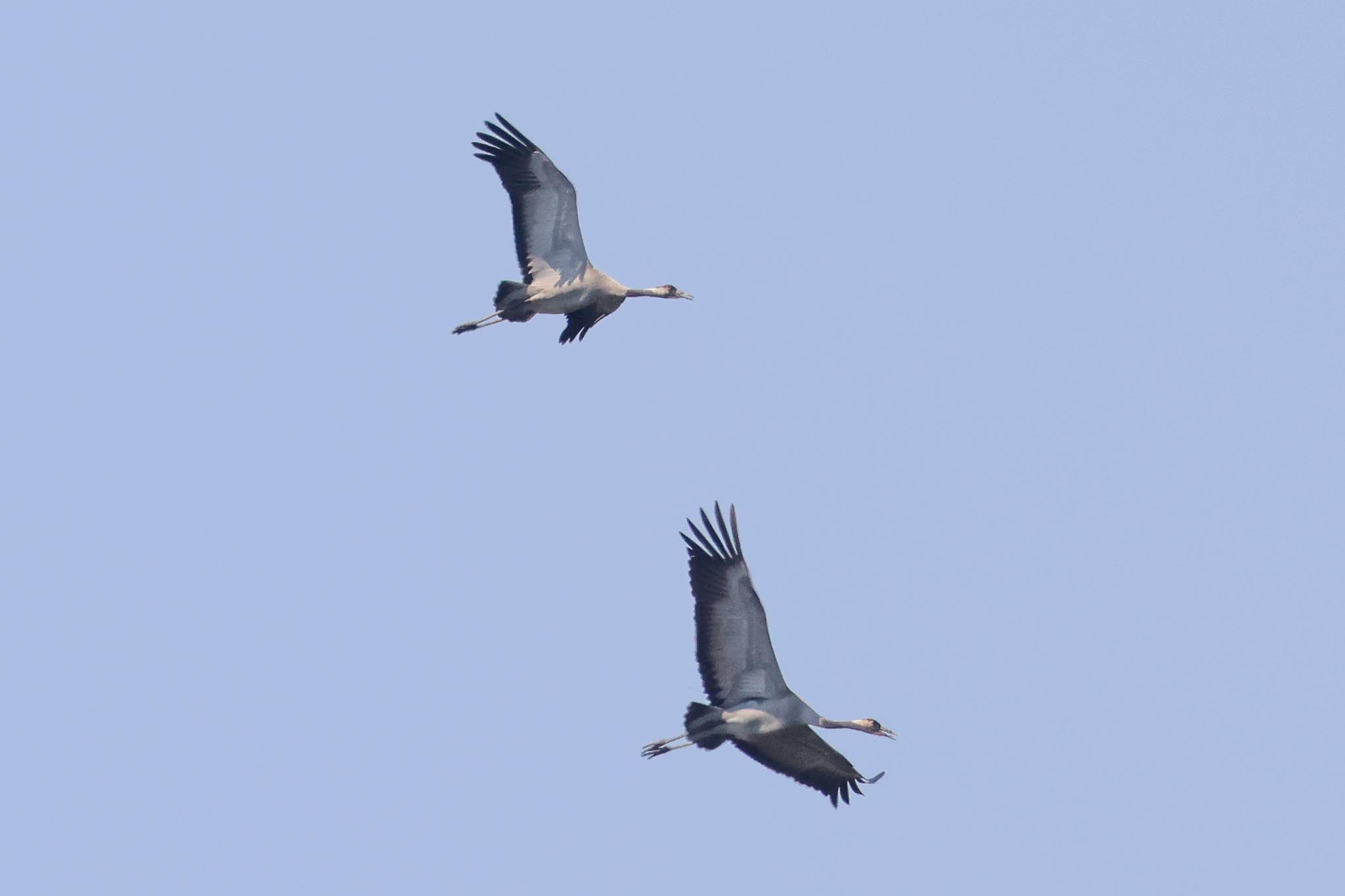
Back at the junction, we turned left and walked out along the Whiteslea Track. A Garden Warbler was singing from the back of the overflow car park as we passed. We had a look back at the first compartment of Brendan’s Marsh from the viewing mound, but we couldn’t see anything we hadn’t seen earlier. We were hoping for more Swallowtails now but it was a bit breezy here, and then a couple of people said the Swallowtails showing very well along the path past the Lodge, so we carried on down towards the Broad.
We stopped briefly by Bittern Hide where we heard a Bittern booming. We were surprised we hadn’t seen any feeding flights, as we normally do at this time of year, though possibly the breeding season is behind schedule this year due to the cold spring weather.
Along the path towards the Observatory tower, we found a couple of people watching a Swallowtail. It was resting on a thistle at first, with its wings up, but then flew round and landed on a grass stem right beside the path. There are not many flowers out after the recent cold weather, no nectar sources, so it was interesting to watch this one feeding on grasses.
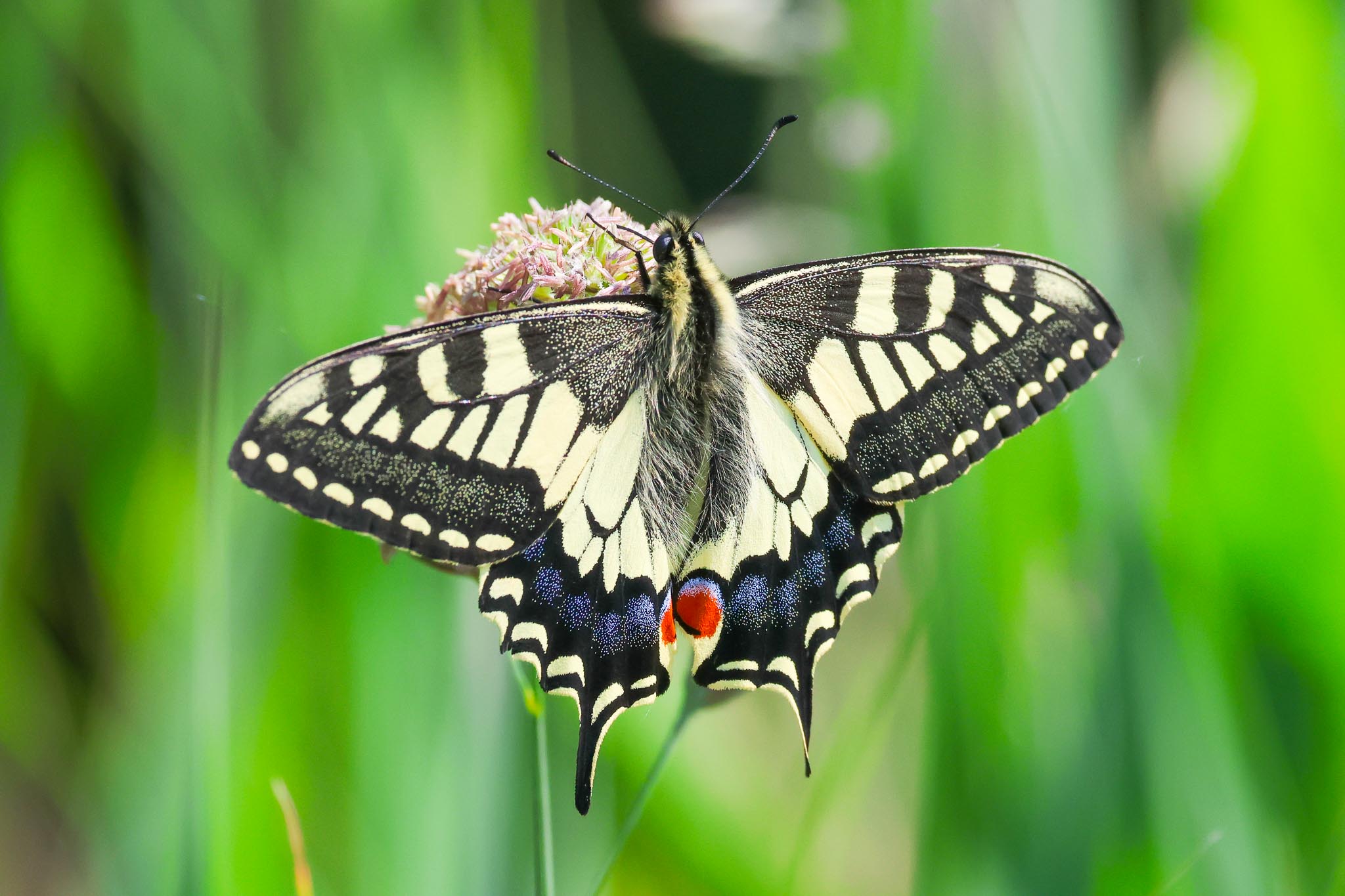
We had a quick look from the Observatory, so we could see the Broad. Two Common Terns flew round and landed on one of the posts marking the channel. There were lots of Mute Swans on the water beyond, along with Coots and a couple of Great Crested Grebes, typical of the deep water broads. Further on, a Grasshopper Warbler reeled briefly. We stopped to listen, but unfortunately it had gone quiet.
Further round, once we got into the lee of the trees, we found several more Swallowtails, another 3-4. One was wanting to come down to feed on a Flag Iris by the path, but was possibly put off by all the admiring people and landed on a reed stem a little further out.
A couple of Great Spotted Woodpeckers called from the wood and we watched them flying through the trees and landing briefly. As we turned back along the path towards the Visitor Centre, we could hear a Bearded Tit calling, but it went quiet. At the mention of lunch, the walking pace accelerated notably and only the laggards heard more Bearded Tits, and had a couple of brief flight views. At the pond dipping platform, a Willow Warbler was singing in a willow above our heads.
It was time for lunch, so we set in the picnic area – it was so warm and sunny, we even sat in the shade. How different to yesterday! The Garden Warbler was still singing in the trees beyond and another Hobby zipped over just above us. The ice cream at the Visitor Centre proved particularly popular today, with the rhubarb & ginger a personal favourite although various flavours were tried by the group! We were just finishing lunch when another Swallowtail flew in around the bushes in the picnic area.
We had walked a good way already today, and probably couldn’t manage a lot more in the heat, so we headed down to Potter Heigham Marshes to see what we could find on the pools. It was a good day for Swallowtails – as we found another one nectaring on vetch by the track as we arrived and then had several more fly over. They had clearly emerged in numbers in the warmth.
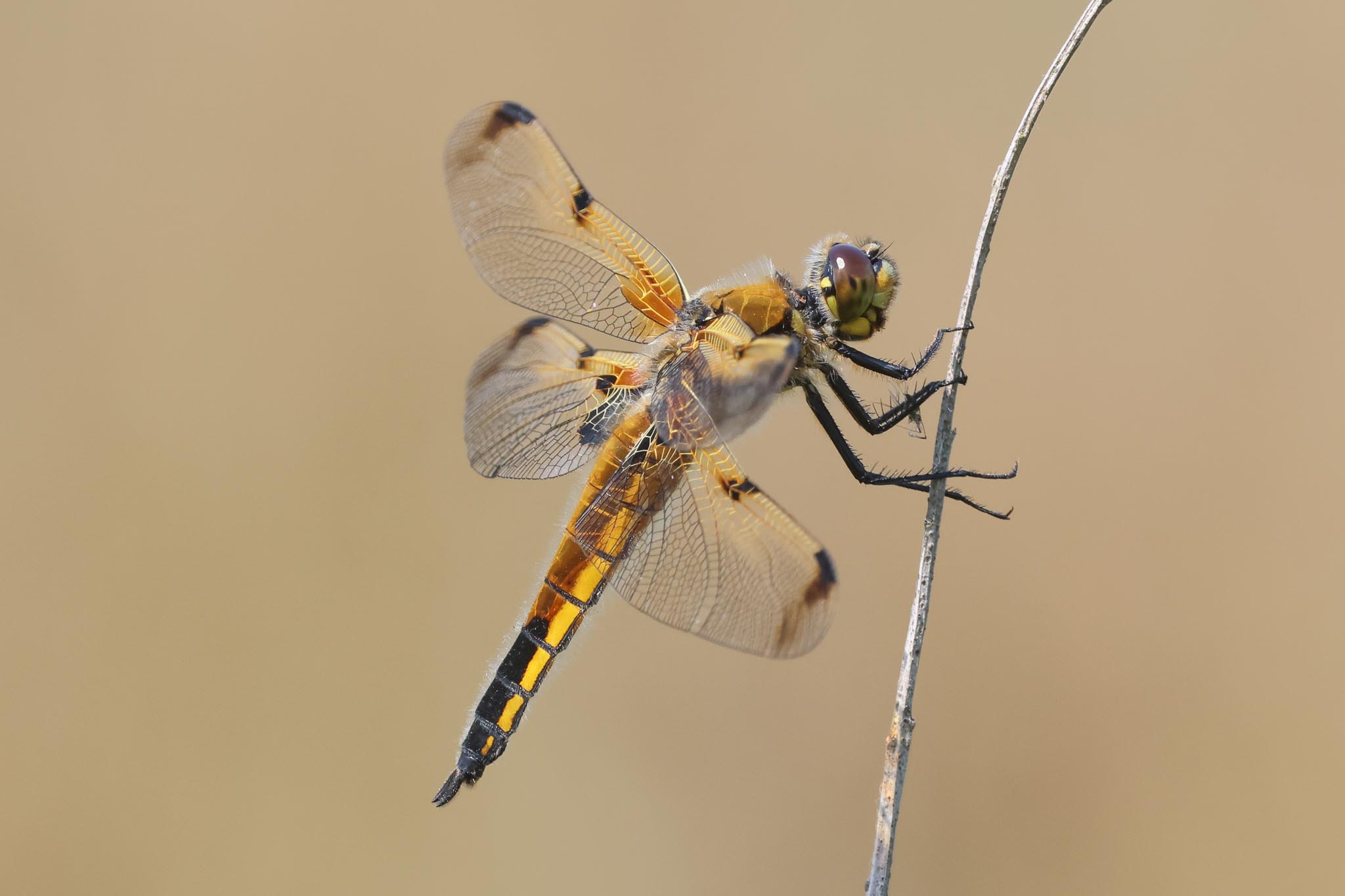
Up onto the bank, we had a slow walk along, scanning the pools. There were lots of ducks, including more Wigeon and several Common Pochard, but no sign of any Garganey this afternoon. We noticed a Cuckoo in the trees and got it in the scope. When it took off, it flew across the path in front of us and out into the reedbed, where it landed in a small alder tree. A flock of Avocets flew past, there were a couple of Cetti’s Warblers calling and several Reed Warblers in the reeds.
We walked down along the edge of Candledyke, but once we got out of the shelter of the trees, it was very windy. We were hoping we might find Bearded Tits here, but there was no sign of any now and they were probably hiding in the bottom of the reeds. As we were heading out again this evening, we had to be back in good time today, so with a long drive back to base we decided to call it a day.
Nightjar Evening
We headed out again after dinner, driving up to the coast, past the barn where the Little Owls were last year but which is now almost completed development into a house. Sad. There was no sign of any Barn Owl activity along the coast road, but a Spoonbill flew out of the trees at Cley and dropped down towards Snipe’s Marsh, where it appeared to flush a second Spoonbill up from the pool, and they both flew off. There was no sign of any Barn Owls the other side of Cley either. A Kestrel was still out, and landed in a dead tree.
We decided to try our luck inland, and hadn’t got far when we spotted a Barn Owl disappearing behind some trees. From further up, we could see it again, flying back behind us over the field. We turned round, and tried to follow it, turning down a side road which would take us down to where it was heading, but by the time we got there it had disappeared.
It was already time to be heading up to the heath, so we drove on. We parked in the trees and walked out onto the open heath. We could hear Stonechats calling and spotted a couple perched on the gorse in the gloom, a male with a couple of streaky juveniles. We had not been here long before the first Nightjar started churring – they were early tonight. It was rather distant, right out in the middle, but we stopped to listen.
Another Nightjar churred briefly much closer, so we walked over just in time to hear it call and see the male flying round, flashing the white in wings and tail. One landed on a branch, and although it was hard to see against the dark trees we managed to get it in the scope. Thankfully it stayed for a minute or so, so we could all get a look at it.
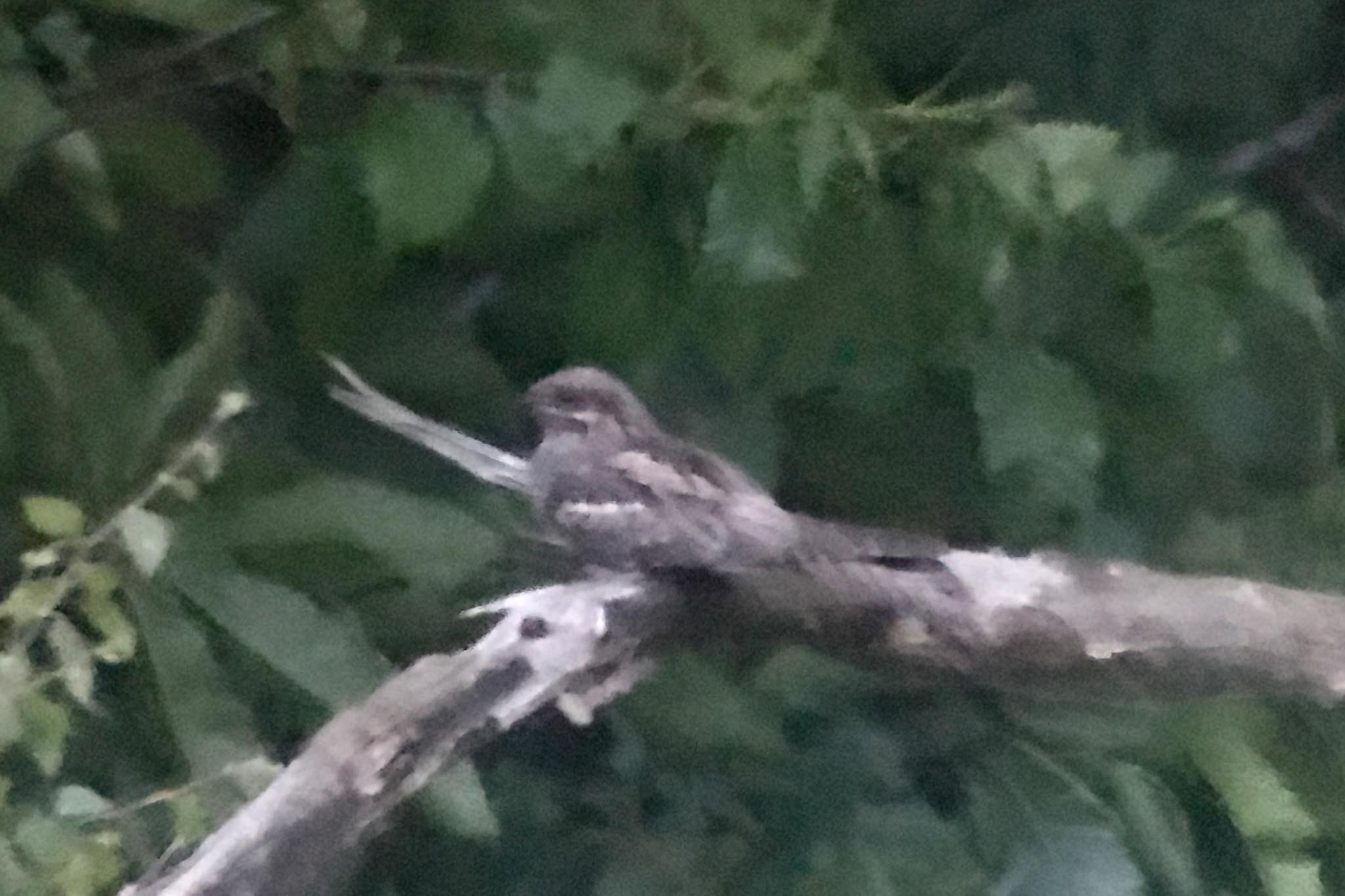
When it took off again, there were now at least three Nigthjars flying round, a couple of males and one female without the white flashes. The original male was still churring out in the middle on and off, and another male started churring further along. It was nice now to just stand and listen. A Tawny Owl hooted in the distance, and we could hear Roe Deer barking too.
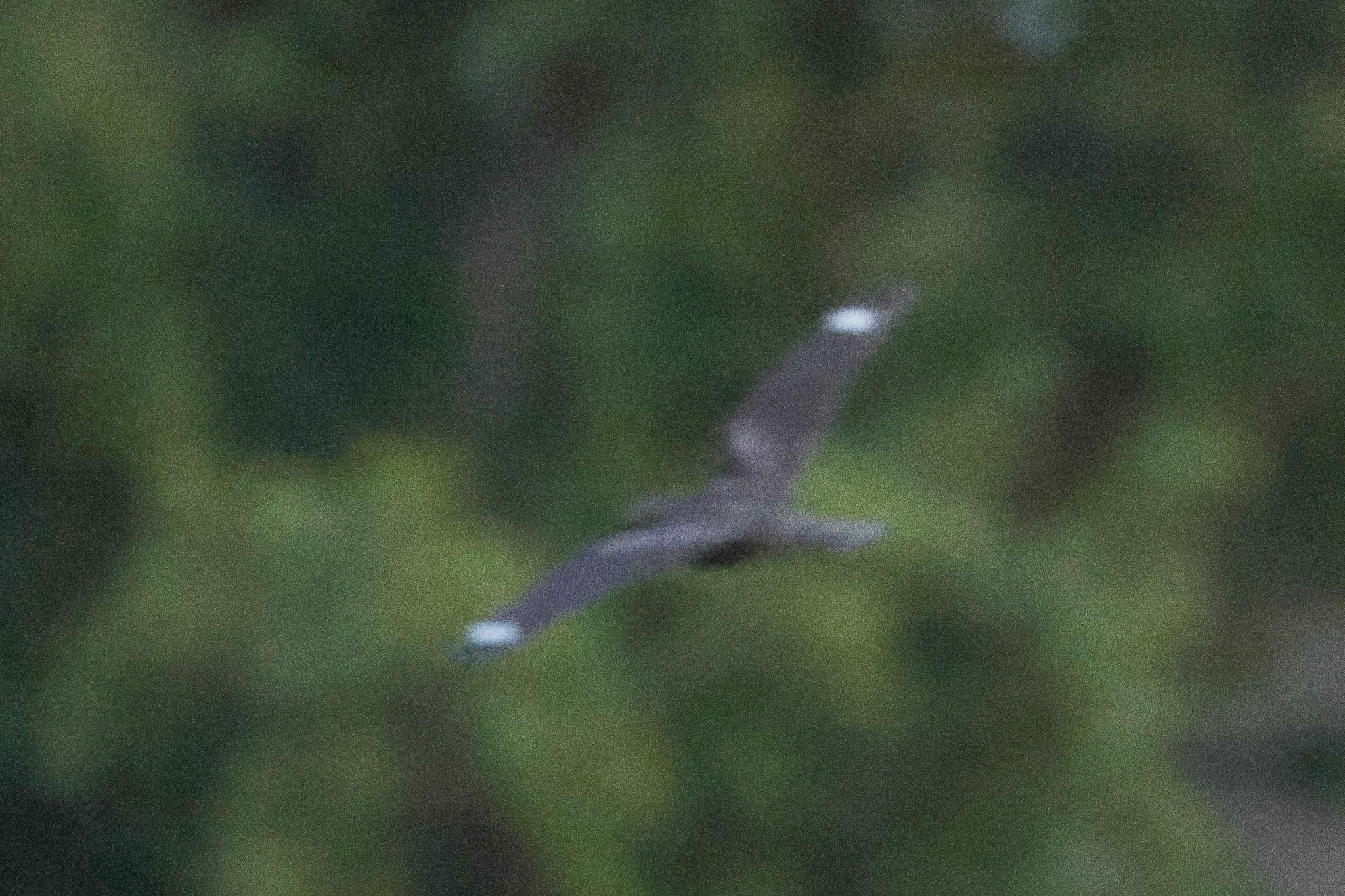
As we stood and listened, we had several more flight views of Nightjars overhead and hunting for moths around the trees. Then as it started to get dark, it was time to head back. We bumped into one of the locals, a regular on the heath, who monitors the Nightjars, and he related the story of a recent egg theft of one of the nests. Shocking that such practices still occur.
On the drive back to base, another Tawny Owl flew over the road and landed on the wires as we passed. Then it was time for bed for a few hours – we were going to be out again tomorrow.
















